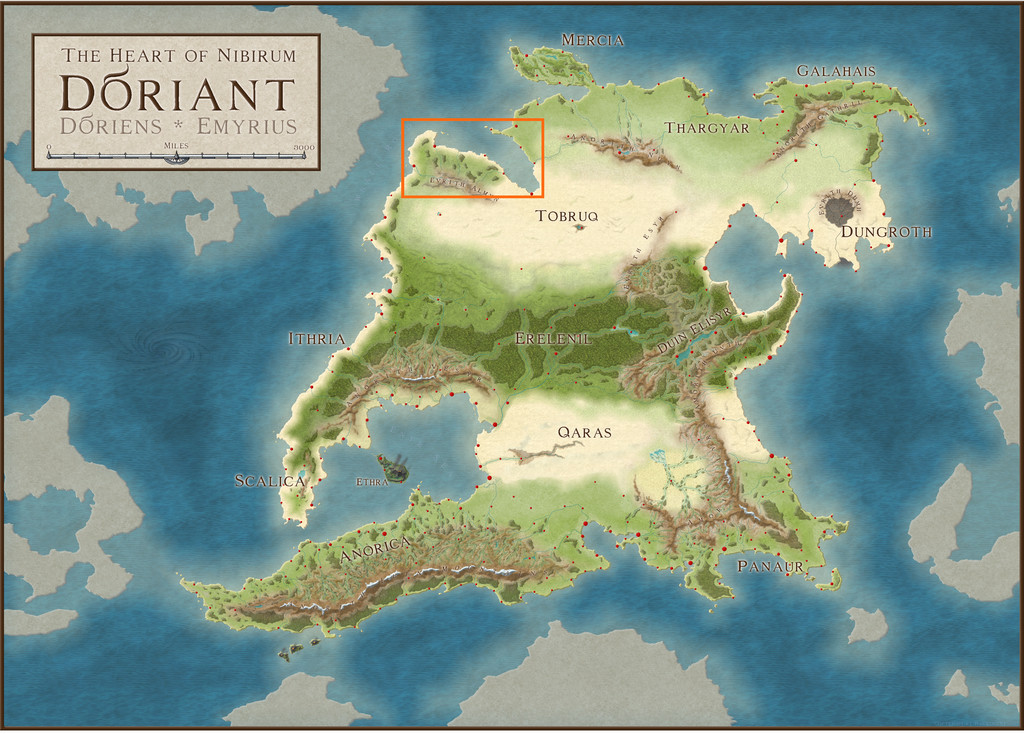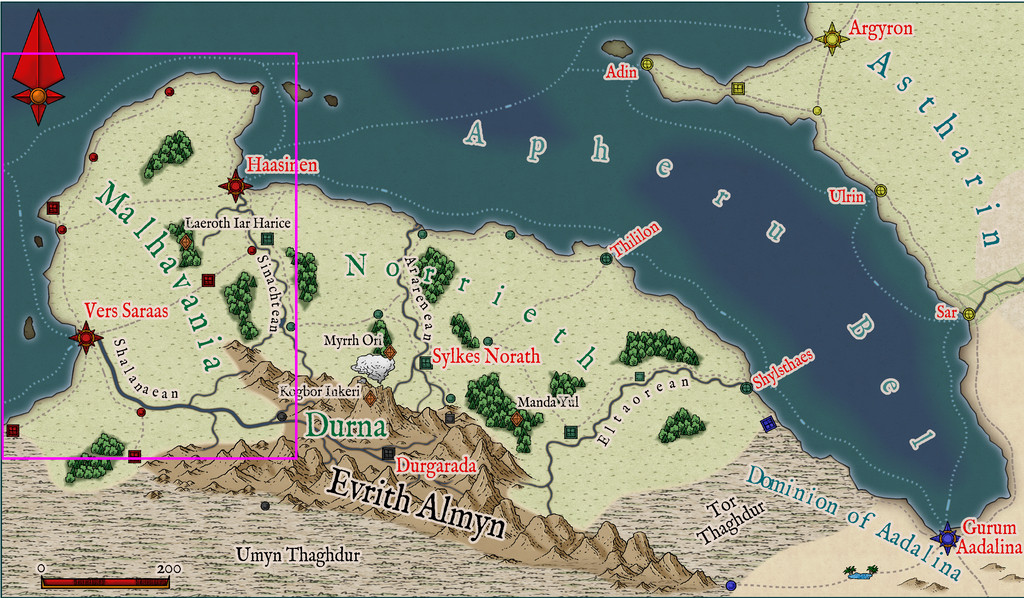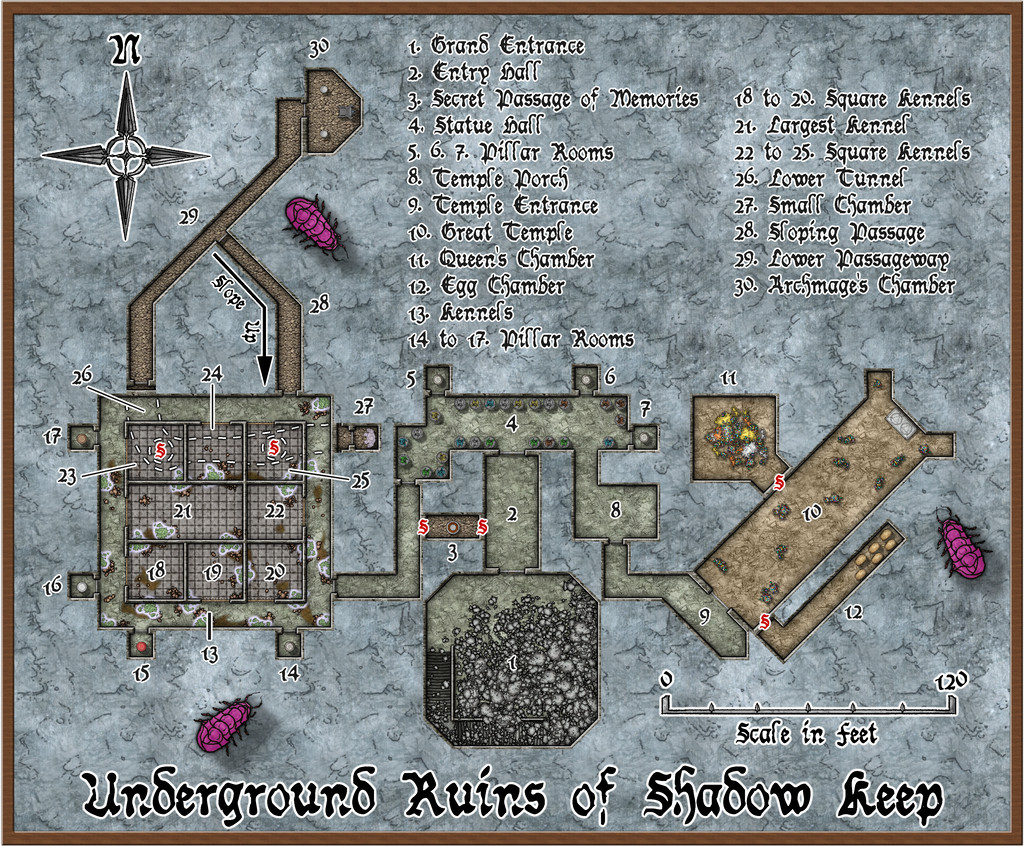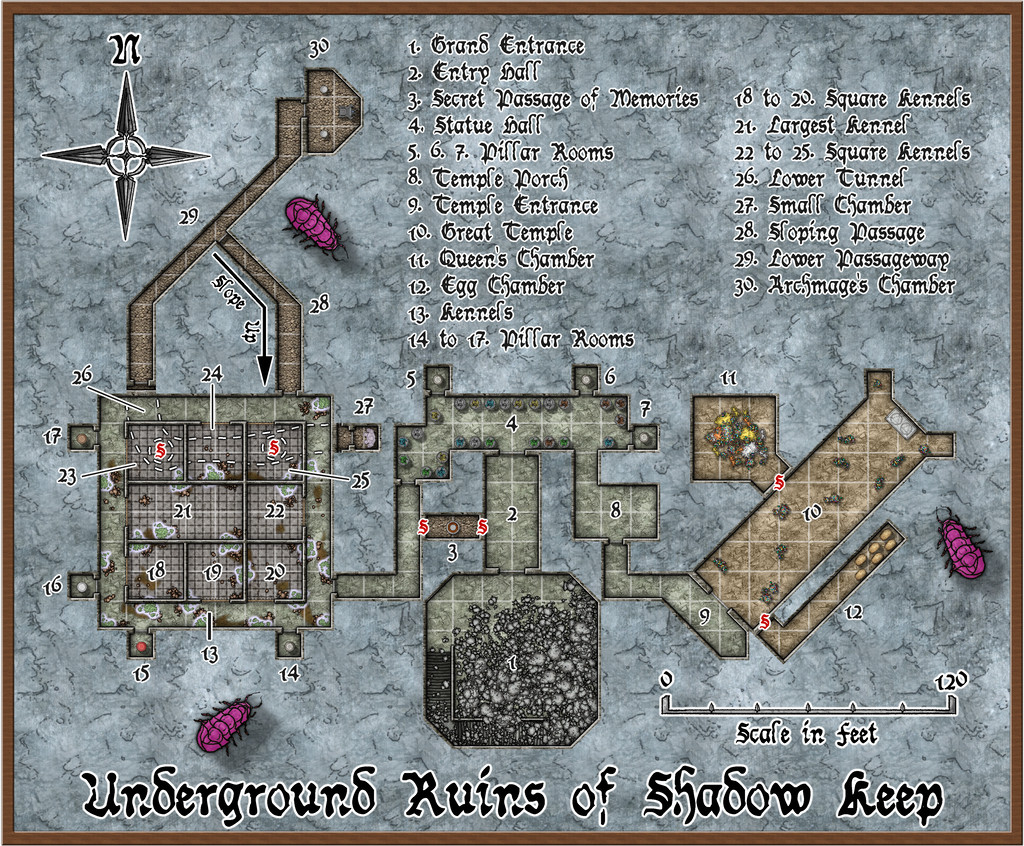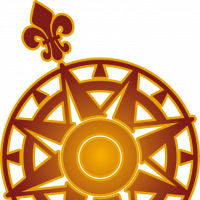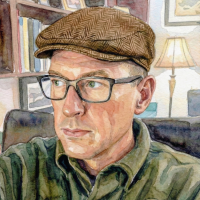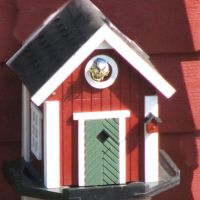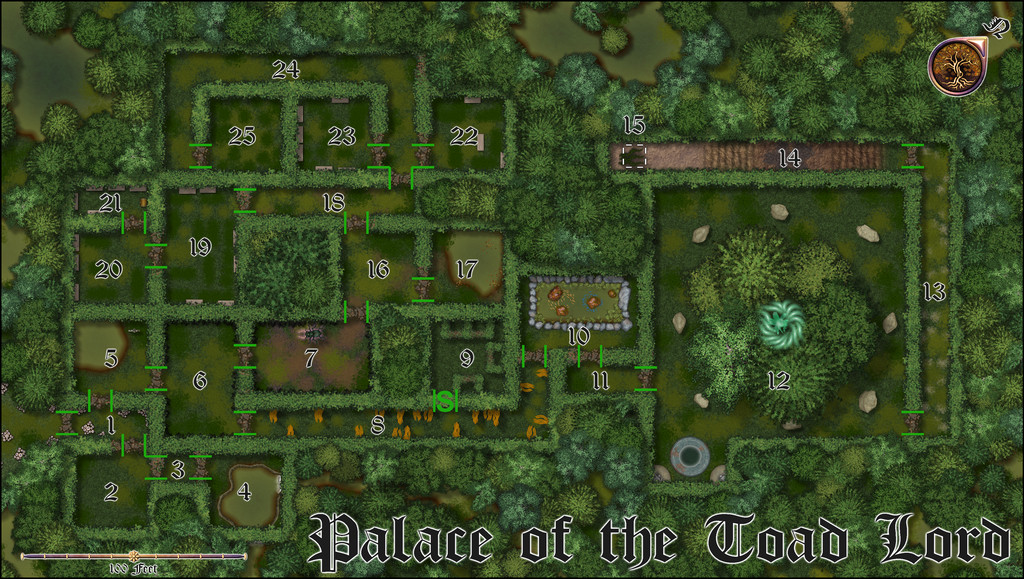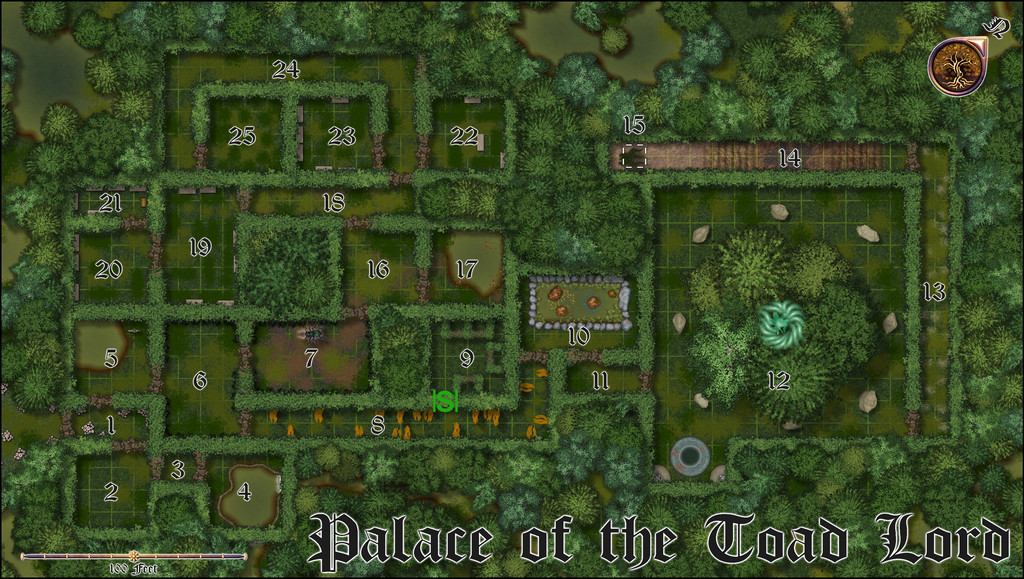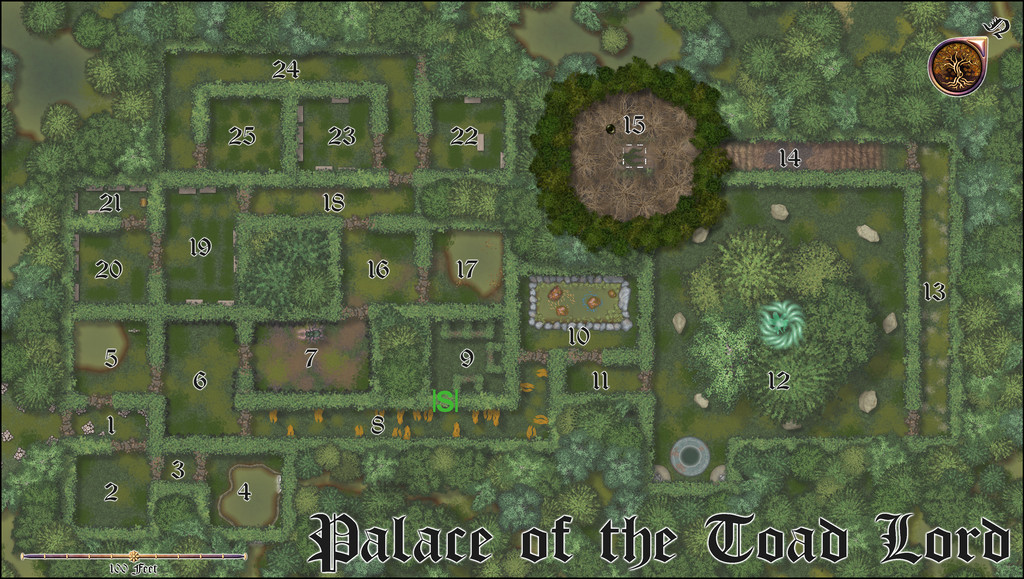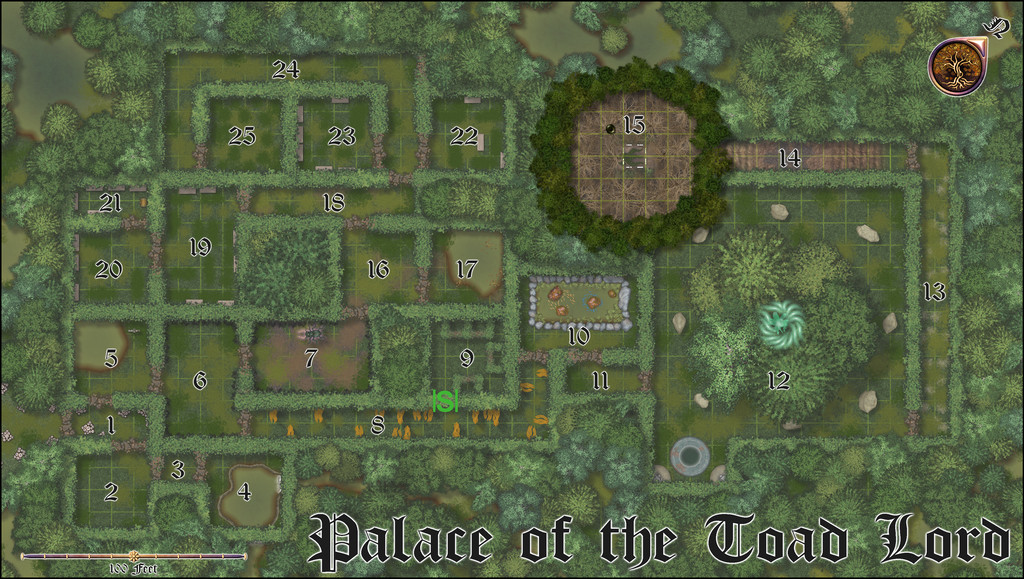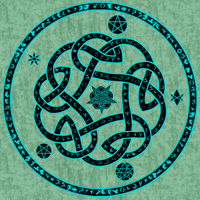
Wyvern
Wyvern
About
- Username
- Wyvern
- Joined
- Visits
- 3,151
- Last Active
- Roles
- Member
- Points
- 5,378
- Rank
- Cartographer
- Badges
- 24
-
Community Atlas: Ruins of Shadow Keep, Malhavania, NW Doriant
As mentioned last time, the next map in this sequence was heading for somewhere in the NW Doriant map, a huge part of that largest continent:
However, when I investigated further, it turned out the Malhavania peninsula there had already been mapped previously. While itself no small region, that did start to look a little more hopeful:
Checking the smallest pre-mapped part of the Malhavania one, around Loksa, clinched things, with its convenient selection of interesting potential sites available to slip-in a small, new, dungeon map:
As this final map indicates, I chose the Ruins of Shadow Keep for this site. It's probably not too obvious at this resolution, but the black-and-white area is covered by a hex-map (drawn for the Atlas by Kathorus), with six-mile hexes. I did consider mapping the whole hex, but decided against it finally, mostly because the previous map-group I'd prepared had already been so long delayed in being completed.
The dungeon design was derived this time from randomly-rolled layouts using the Inkwell Ideas Trailblazer Set of Dungeonmorph Dice, the first of the four designs prepared from this set, though I did make a few minor changes to fit better with how things developed for what the contents and purpose of this structure might be/have been ("Ruins", after all). Much of those contents were determined using random tables from the revised edition of "The Tome of Adventure Design" published by Mythmere Games. I only realised after doing so that the Trailblazer dice set actually does have accompanying notes in a separate Inkwell Ideas book! Still, there are three more designs from that set after this one, though I did take a few ideas from that book as well, notably that the original inhabitants of Shadow Keep had been Dwarves, that part of the complex had been a temple, and that another part had been kennels.
One thing the "Tome" came up with were some very weird creatures, which rapidly became the focus for why the Keep had been abandoned and ruined, the Elemental Wasps. From the notes prepared to go into the Atlas: Elemental Wasps. Horse-sized, hairy, spider-form, colonial, egg-laying outer horrors, with three spherical body parts - a small head, medium body and larger abdomen - the body segment with 8 or 10 pincer-tipped legs. Normally invisible, except during and after feeding on blood, when their forms appear pink and sharply-ridged. Attracted to small, shiny objects that they collect as nests. May become ghostly and intangible at will. They have three forms, Queen, Forager and Warrior, of which the Forager and Warrior may cocoon to transform into any other type, as the Queen requires. Cocoons and eggs are always visible.
I also provided the creatures with relevant game stats based on the "Shadowdark RPG", published by The Arcane Library, for GM's guidance. To give an idea of what these (all non-flying) Wasps get up to, these are the notes for the Queen: Elemental Wasp Queen. An almost immobile form, with a huge, egg-laying abdomen and eight tiny legs. AC 12, HP 42, ATK 1 mental burst and 1 lightning cloud or 1 blood suck (near) +3 (1d10 + blood drain), MV close, S +3, D -4, C +2, I +0, W +1, Ch -4, AL C, LV 9. Blood Drain. Extensible head proboscis can hit one target in near. Once attached, may auto-hit each round as the Queen's only attack. Queen regains 1d6 HP per successful attack round. Target may DC 12 STR to break attachment on their turn. Lightning Cloud. Fills a double-near-sized cube extending from the Queen. DC 15 DEX or all within the area take 4d8 damage (DISADV on check if wearing metal armour). Mental Burst. Fills a near-sized cube around the Queen. DC 15 CON or paralyzed 1d4 rounds. Impervious. Electricity immune. Incorporeal. In place of attacks, become corporeal or incorporeal. Invisible. Naturally invisible. After using Blood Suck attack successfully, becomes partly visible. All who can see this, DC 12 CHA or paralyzed 1d4 rounds.
The other forms all have variant powers based on these, with physical pincer attacks as well, and they're a lot more mobile, able to climb vertical surfaces and so forth. There are grubs too, but they're unable to defend themselves, and need looking after by the other mobile types till they become adults.
All of which preamble brings us to the new map:
This also has a gridded version, although the angled areas work somewhat less well with that, of course:
The mapping style here started out as the CA94 Dwarven Dungeons one, given the initial inhabitants were, after all, Dwarves. However, it soon became clear that I needed other elements as well. SS4 Dungeons of Schley and the free monthly "Schley" symbols are already intended to work with Dwarven Dungeons, so that was fine. However, I also ended-up adding items from CA209 Stairs & Steps, Sue's Creepy Crypts (CA186 + CA188) and DD3! So using the Worn Manuscript font from Perspectives 3 wasn't much of a step further...
Of course, when you start a new map with Dwarven Dungeons, the first symbol catalogue that shows up has the cave bugs in it, so while they're not very close to how I envisioned the Elemental Wasps (except maybe the maggot-grubs), I thought they'd do to hint at Things To Come for explorers here 😉.
There is much other weirdness as well. The "Tome" provides opportunities to go to town when designing features such as statues, and having had it come up with a Statue Hall (4), all the statues in it now have individual descriptions in the Atlas map notes, based on those random options, as do the individual pillars in those seven Pillar Rooms (because you can also randomly design pillars using it!). Even the glowing hanging moss across the Kennels area (13 to 25) originated in tables there. The ceiling crevices from which it has grown down from the overlying jungle (the site is at about 25°N latitude on Nibirum) were though my own thought to explain how it got to be here at all, at least. Oh, and there are poisonous little spiders in it that keep away other predators...
One more weird item discovered late in the process concerns the Dwarven Dungeons scalebar. If you peer closely at the gridded version of the map, you may be able to tell the 10-foot grid squares do not match perfectly with the 20-foot marks on the scalebar. Ordinarily, when adding a scalebar symbol, I always check it against the grid, to make sure the size is what it's supposed to be and that I haven't messed it up. Commonly, I also place the centre of the scalebar using the snap grid, as a further test. Doing that showed this scalebar didn't fit to the grid, even after testing with adjusted symbol scaling, including trying the varicolor and metric scalebar versions, in case one worked. All proved identical, however. So then I measured the separation of the marks on the bar at scale-size "1", and found the separation between individual marks came out variably between about 15 and 17 feet, with no consistency, which of course explained things. I did think of swapping-in an alternative bar, but I wanted to try to stick as much as possible with the Dwarven Dungeons style here, so have just left it, given it'll still be sufficiently correct for most uses. Something to be aware of when mapping with this style though, perhaps.
Meanwhile back at the broader-scale map, features such as those ceiling crevices in the Kennels, started me considering it probably needed a surface map as well. We'll come to that next time...
-
Is there a way to make a square grid such that the different squares are offset from each other?
OK, maybe try this.
1) Set up a suitably-sized snap grid that'll let you draw squares of the exact size you need, and keep the snap grid turned on.
2) Draw an outline square of the size you require, with the line thickness you need it to be, using the snap grid.
3) Copy that square, and paste it immediately below the first one. Again, the snap grid is your friend.
4) Then paste another line of two squares to the right of the first two, with the half-square offset required. You may need to adjust your snap grid to allow this correctly.
5) This gives you a base of four squares in the correct pattern that you can then copy, making a larger area of squares with the necessary offset. Depending on how large an area of squares you need, once you have a larger part of the pattern available, you can simply copy said larger number of squares to speed things up. If you group the batches of squares too, that will make copying the groups easier.
6) Once you've filled the area you need with the offset squares pattern, save this as your base file that you can then open and re-save each time you want to draw a map using this offset grid.
By using the snap grid and basic commands like grouping the areas of squares, the whole process should be pretty quick to do, and hopefully fairly problem-free.
[Edited this where boldfaced, as I realised after posting that the pattern actually needs a four-square group, not a five as I originally suggested! (Otherwise you end up repeatedly overlapping the column with three squares in it.)]
-
Compass Roses
And now released into the Wild, looking thoroughly stunning! Amazing work, as many here have already noted, Shessar!
-
New PF Blog Post, "10 Quick CC3+ tips", by Remy Monsen
Just posted on the PF Blog yesterday, this is a new, slightly eclectic, list of useful options when mapping with CC3+, by our own resident expert Remy Monsen. While the Blog posts are always worth seeing, this is one that's worth printing a PDF version of for future use, I think.
Some of the ten tips will likely be familiar, others things you know about but can never remember the times they're needed (like how to reset the "exporting in fewer passes" thing, item three on this list, and which I always end up scrabbling around trying to recall where I put the note as to what command has to be used to reset this, after a rare glitch that's reset it to the smaller amount!). And others may be new to you - OK, me, then 😁 (looking at you, Quick Move)!
-
Community Atlas: Dragon Head, Lanka, Kumarikandam
While the map layout from the Inkwell dice designs was pretty straightforward, I'd already amended it in a few places before embarking on the CC3+ drawing, because rather than being subterranean, this was going to be a surface feature Palace building, albeit one composed of living vegetation, to fit with its key inhabitant, the Swamp Elemental known as Ssathrokkwa, the Toad Lord. The Palace is thus an extension of himself, in a somewhat loose sense. From a distance, and even quite close-up, it simply looks like one of the denser patches of swamp-jungle vegetation scattered across the whole Swamp area, while inside, being composed of living shrubs, trees and other plants, with marshy floors that sometimes include pools and water channels that pass beneath the walls, the structure isn't as solid as it may appear, albeit with thorns, cuttingly-sharp leaf edges, and dense internal branches that act as deterrents to anyone trying to force a way through walls or ceilings.
Ahead of the mapping, aspects of the Palace and specific items within it were randomly chosen, with adaptations, from a variety of tables in the main Shadowdark RPG rulebook, the free PDF adventure pack "Shadowdome Thunderdark" again, both by The Arcane Library, and the "Curiosities" tables in the "Unnatural Selection" supplement for Shadowdark published by Dungeon Damsel.
For the mapping style, this became quite an unusual mixture. One of the possibilities I'd considered for the Swamp of Toads map was the Darklands City style, and although that wasn't used there, I did like the connecting-symbol hedgerows in it, and thought they might be interesting to use here instead. The tree symbols and water options from that were also deciding factors. However, this is a dungeon-sized map, not a city-sized one, so others of Sue's dungeon-scale styles were pressed into service as well, ultimately including those for Marine Dungeon, Creepy Crypts, and Forest Trail, aside from a few more from DD3.
And so to the map:
Part of the reason I wanted to use the Darklands City hedges was because they come with thinner, brown-leafed segments, which seemed an ideal way to indicate the doors to this complex. That's because they don't appear obvious to non-residents, and open like a camera iris, the branches and foliage pulling back to form a rounded opening at the touch of a living hand or tongue (the latter is the usual method for the Toadfolk, naturally). The solitary Secret door is shown on the map above ordinarily, which decided me to also provide an option to show similar marker-lines for the ordinary doorways as well, for clarity:
That should have a toggle in the final Atlas FCW version.
Similarly, there should also be a toggle for the map grid:
That's been kept deliberately very subtle, and sometimes well-hidden (especially by that grove of trees in the Throne Room, area 12 - the floor space continues beneath their canopy, although much more heavily vegetated than in other open areas). GMs needing a more obvious grid can of course adjust it as necessary. There's also a cluster of magic crystals in the centre of the grove, for those wondering what might be happening there - there are more notes in the PDF file for the Atlas, including Shadowdark game stats for the new and variant creatures involved.
It's amazing what can be repurposed as something else at times. That long, rising passageway with two sets of mud-and-branch steps in (14), for instance. The "steps" are reused rectangles of the Fields bitmap fills from Darklands City, the mud in between the Earth texture fills from there, and the darker area (actually an ooze pit trap) beneath the "14" label, the dungeon dirt patches from Creepy Crypts. At the southern end of that passage, that dashed-white-line square is set over some strands of Kelp from Marine Dungeon, standing-in for swamp-jungle liana vines! And that square hatch and vines lead up to the Watch Tower, available on yet another FCW toggle for the final Atlas version, thus:
Of course, that Tower's of living vegetation too, so the floor is composed of interlocking branches, and the walls of canopy foliage, through which the watchers can climb to keep watch. There's a gentle, milky haze overlay across the lower parts of the map to indicate this is the highest part of the complex as well, and if required, there's an extra area of grid that can be shown for the Tower as well:
The lower grid doesn't need to be shown at the same time, as they're on separate Sheets, although both are here.
This was a lot of fun to draw, especially with the water pools here and there. Indeed, I got a bit carried away with adding water channels and pools outside the complex initially, as they just looked so interesting, and had to scale those back ultimately in places!
With this complete, the next map's scheduled for somewhere in the vast expanse of NW Doriant...



